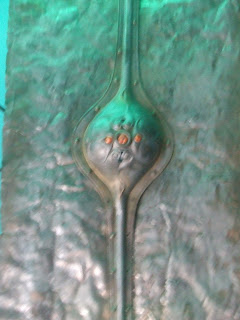Steve and I have continued to 'tinker' with the Pike and Shotte rules and our next target was the cavalry melee. It seems odd that they are limited to one turn and no reinforcements, although contemporary accounts do mention units being 'seconded' by others. Steve therefore devised some 'tweaks' to enable cavalry melees to continue, (but not endlessly with 'rubber swords' ie successive rounds with no casualties). To try them out we needed a cavalry scenario and where better than the open spaces of Eastern Europe?
I therefore put together two forces, one of Muscovites with Tartar allies and a smaller force of Poles and Cossacks. Purists would raise their eyebrows (at the very least) at the sight of my 'Tartars', who actually included Huns and Scythians in their ranks. However, they were all skirmishing light cavalry armed with bows and needs must when the finances are tight.
 |
| The Polish right |
 |
| The Tartars |
 |
| Boyar levy |
A roll of the dice allocated the Muscovite/Tartars to Steve, whilst I took the Polish/Cossack force. I was outnumbered roughly 3:2, but did have better quality troops. My plan was to hold off the Tartars with the Cossacks and try and drive off the Muscovites with the Poles, spearheaded by my Hussars.
 |
| The Cossacks advance |
Early on the Muscovites proved unwilling to advance, though the Tartars were more aggressive. Fortunately, the Cossacks managed to hold the Tartars whilst my centre moved forward. The first clash took place there with my hussars punching through the leading Muscovite unit and then engaging the one behind. After a fierce struggle the Hussars came through again, but at the cost of going Shaken. Supported by the Pancerni they managed to hold the attack of Steve's bodyguard and after two turns the two units fell back.
 |
| A rare sight, Polish Hussars routing |
On the Polish left it took some time to get the units moving and my reserve (a unit of Hussars and one of Pancerni), proved even more reluctant to advance. When the clash eventually occurred on the left it was the Poles who were routed, my best troops, the Hussars ignominiously scattered by the Noble Levy. Only some stout fighting by the Pancerni managed to stabilise the situation.
On the right, the Cossacks were pushing the Tartars back, though the latter's 'fire and evade' tactics were inflicting casualties. I was moving the reserve unit around to try and cover the gaps and prevent any Tartars sneaking through to cause mayhem. However, when one of my units went Shaken they were charged by the Tartars and pushed back. The reserves steadied the line, but then the other unit went Shaken. My left was looking vulnerable.
 |
| The central melee |
 |
| The melee continues |
In the centre units were charging, meleeing and then after two turns of no decision pulling back. My reserve eventually moved forward and the fresh units gave the necessary impetus to break the deadlock. The Muscovite centre was all but destroyed.
 |
| The Polish left routs |
However on my left, the boot was on the other foot. Slowly the Noble Levy were gaining the advantage and my troops were being pushed back. Then a unit broke, leaving a gap and through this moved a Muscovite unit. If that unit could sweep round and attack the rear of my centre, the day would be lost. Only the difficulty of issuing orders to the unit saved me. It gave me enough time to organise a new flank and then counter attack.
With the reserve and two units from the centre the Poles pushed the remaining Noble Levy back and from the field of battle. It was just as well, because on the right the Cossacks were facing defeat. One unit had been destroyed, another was in danger of going the same way. They were saved by the Tartar Khan ordering his men to fall back. He recognised that they could not prevail against the Polish cavalry and so narrowly, the day belonged to the Poles.
How did the new amendments work? Well some melees were 'seconded' and the new support mechanism seemed to work well. We found that the polish Hussars were just too powerful and in the afternoon session educed their advantages. This resulted in closer melees, as the +3 made a Polish victory far too likely.















































